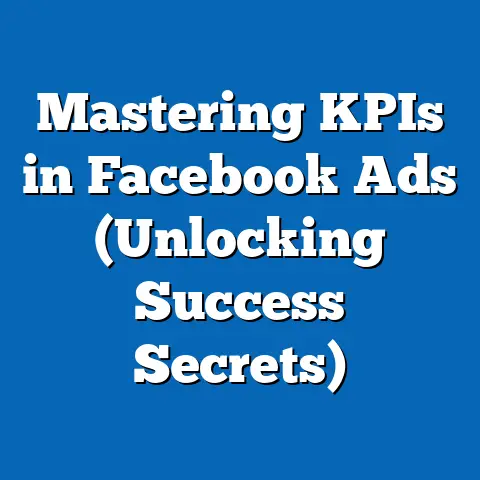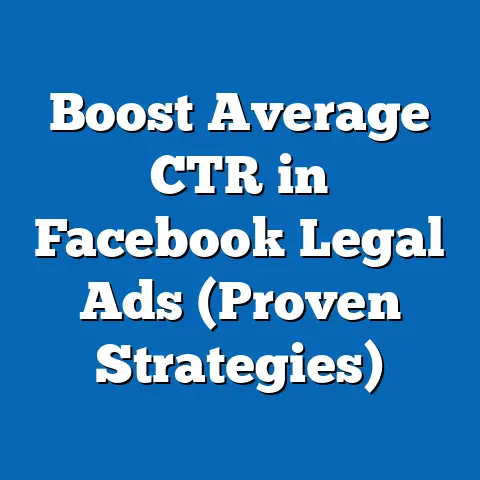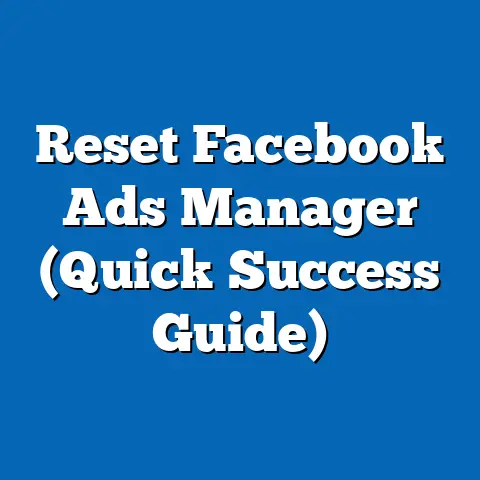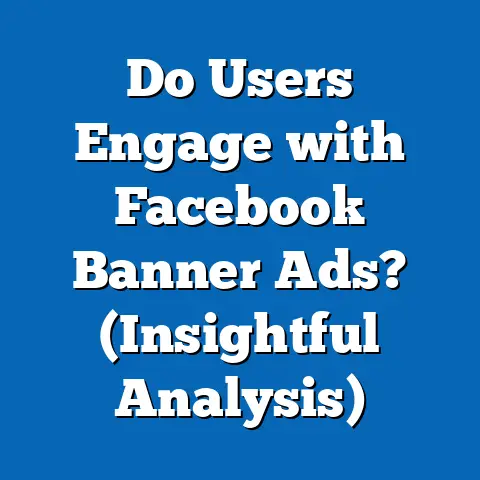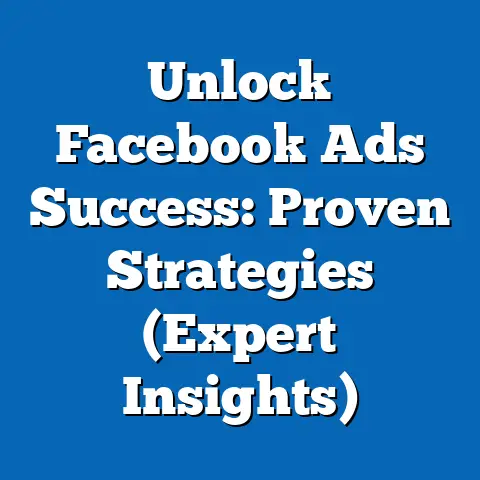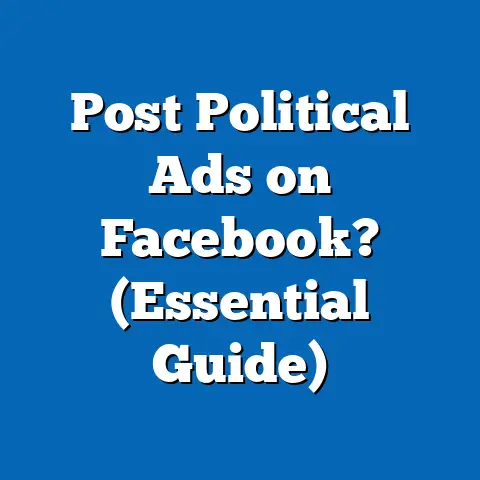Revamp Ecommerce fb ad Strategy (Proven Tactics Inside)
Allergies are more prevalent than ever. It seems like everywhere I turn, someone is dealing with a food allergy, seasonal sniffles, or skin sensitivities. Millions are affected, and this has created a huge demand for allergy-friendly products and services. In fact, the global allergy market is projected to reach billions in the coming years!
Understanding consumer behavior in this context is crucial. Targeting people who are actively searching for solutions to their allergy problems? That’s where the magic happens. That’s where your ecommerce business can really thrive.
And that’s where Facebook advertising comes in. I’ve seen firsthand how powerful it can be for ecommerce brands, especially those in niche markets like the allergy space. It’s not just about throwing money at ads; it’s about having a strategy. It’s about knowing your audience, crafting the right message, and optimizing for results.
This isn’t a “set it and forget it” kind of thing. The Facebook ad landscape is constantly evolving, and what worked last year might not work today. That’s why I’m writing this guide: to help you revamp your ecommerce Facebook ad strategy with proven tactics that actually drive results.
In this article, I’ll walk you through everything you need to know to create effective Facebook ad campaigns that resonate with your target audience and boost your sales. We’ll cover:
- Understanding Your Audience: How to identify and target allergy sufferers.
- Crafting Compelling Ad Copy: Writing messages that speak directly to their needs.
- Visuals That Convert: Creating eye-catching images and videos that showcase your products.
- Leveraging Facebook Ad Formats: Choosing the right ad formats for your goals.
- Retargeting Strategies: Bringing back potential customers who showed interest.
- Measuring Success and Optimizing Campaigns: Tracking your results and making data-driven decisions.
Ready to transform your Facebook ads and reach the allergy-conscious consumer? Let’s dive in!
Section 1: Understanding Your Audience
You can’t sell to everyone, and frankly, you shouldn’t try. The key to successful Facebook advertising is understanding your audience – really, really understanding them. This is especially true in a niche market like allergy-friendly products.
The Importance of Audience Segmentation
Think of it this way: someone with a severe peanut allergy has very different needs and concerns than someone with mild seasonal allergies. If you lump them together in one big “allergy” group, your messaging will likely fall flat.
That’s where audience segmentation comes in. By breaking down your target audience into smaller, more specific groups based on their demographics, interests, behaviors, and pain points, you can create ads that speak directly to their needs and desires.
I learned this lesson the hard way early in my career. I was running ads for a general “healthy food” store and seeing mediocre results. Then, I decided to segment my audience based on dietary restrictions (gluten-free, vegan, paleo, etc.). Suddenly, my click-through rates and conversion rates skyrocketed! People were responding to ads that were specifically tailored to their needs.
Creating Customer Personas for the Allergy Niche
A customer persona is a fictional representation of your ideal customer. It’s based on research and data about your existing customers, as well as insights into your target market. Creating detailed customer personas can help you better understand your audience and craft more effective ad campaigns.
Here’s an example of a customer persona for the allergy niche:
- Name: Sarah Miller
- Age: 35
- Location: Suburban area
- Occupation: Stay-at-home mom
- Family: Married with two young children
- Allergies: Her son has a severe dairy allergy.
- Interests: Healthy eating, natural products, parenting, children’s health, allergy-friendly recipes.
- Pain Points:
- Finding safe and delicious dairy-free alternatives for her son.
- Worrying about accidental exposure to dairy when eating out or at school.
- Spending hours reading labels at the grocery store.
- Feeling overwhelmed by the amount of conflicting information about allergies.
- Goals:
- To keep her son safe and healthy.
- To provide him with a normal and enjoyable childhood.
- To find convenient and affordable allergy-friendly products.
- Finding safe and delicious dairy-free alternatives for her son.
- Worrying about accidental exposure to dairy when eating out or at school.
- Spending hours reading labels at the grocery store.
- Feeling overwhelmed by the amount of conflicting information about allergies.
- To keep her son safe and healthy.
- To provide him with a normal and enjoyable childhood.
- To find convenient and affordable allergy-friendly products.
By creating this persona, you can start to understand Sarah’s needs, motivations, and pain points. You can then use this information to create ads that resonate with her and offer her solutions to her problems.
Leveraging Facebook Audience Insights
Facebook Audience Insights is a powerful tool that provides valuable data about your target audience. You can use it to gather information on demographics, interests, behaviors, and more.
Here’s how to use Facebook Audience Insights:
- Go to Facebook Ads Manager.
- Click on “All Tools” and select “Audience Insights.”
- Choose your target audience: You can start with a broad audience (e.g., people interested in allergies) or a custom audience (e.g., people who have visited your website).
- Explore the data: Audience Insights will show you demographics, interests, page likes, location, activity, and more.
- Refine your targeting: Use the insights you gather to refine your Facebook ad targeting options and create more effective campaigns.
For example, let’s say you’re selling gluten-free snacks. You can use Audience Insights to see what other interests your target audience has. You might discover that they’re also interested in yoga, organic food, and healthy recipes. You can then use this information to target your ads more effectively.
Creating Tailored Ad Campaigns
Once you have a good understanding of your audience, you can start creating tailored ad campaigns that resonate with them. This means crafting ads that speak directly to their needs, interests, and pain points.
Here are a few examples of how you can leverage audience insights to create tailored ad campaigns for the allergy niche:
- Target parents of children with food allergies: Create ads that highlight the safety and convenience of your allergy-friendly products. Use images of happy, healthy children enjoying your products.
- Target people with seasonal allergies: Create ads that offer solutions to their symptoms, such as allergy-friendly cleaning products or air purifiers. Use images of people enjoying the outdoors without suffering from allergies.
- Target people with skin sensitivities: Create ads that promote your gentle, hypoallergenic skincare products. Use images of people with clear, healthy skin.
Key Takeaway: Understanding your audience is the foundation of successful Facebook advertising. Take the time to research your target market, create detailed customer personas, and leverage Facebook Audience Insights to gather valuable data. This will allow you to create tailored ad campaigns that resonate with your audience and drive results.
Next Step: Spend some time researching your target audience and creating detailed customer personas. Use Facebook Audience Insights to gather data on your potential customers and refine your targeting strategies.
Section 2: Crafting Compelling Ad Copy
Great visuals will catch someone’s eye, but it’s the ad copy that seals the deal. It’s the words you use to communicate the value of your product and persuade people to take action. In the allergy niche, where trust and understanding are paramount, compelling ad copy is even more critical.
The Elements of Effective Ad Copywriting
Effective ad copywriting is about more than just writing pretty words. It’s about understanding your audience, addressing their needs, and persuading them to take action.
Here are some key elements of effective ad copywriting:
- Clear and Concise: Get straight to the point and avoid jargon.
- Benefit-Oriented: Focus on the benefits of your product, not just the features.
- Empathy: Show that you understand your audience’s challenges and pain points.
- Urgency: Create a sense of urgency to encourage immediate action.
- Call to Action: Tell people exactly what you want them to do (e.g., “Shop Now,” “Learn More,” “Get a Free Sample”).
The Significance of Empathy in Messaging
In the allergy niche, empathy is essential. People are often frustrated, scared, and overwhelmed by their allergies. They’re looking for solutions that are safe, effective, and trustworthy.
Your ad copy should acknowledge their challenges and show that you understand what they’re going through. Use language that is compassionate and reassuring.
For example, instead of saying “Our product is allergy-free,” you could say “Finally, a delicious snack you can enjoy without worrying about allergens.”
A Formula for Compelling Headlines and Descriptions
Here’s a simple formula for writing compelling headlines and descriptions:
- Headline: Problem + Solution + Benefit
- Description: Expand on the problem, explain how your product solves it, and highlight the key benefits.
For example, let’s say you’re selling a hypoallergenic laundry detergent. Here’s how you could use this formula:
- Headline: Itchy Skin? Our Gentle Detergent Soothes Allergies & Irritation!
- Description: Tired of laundry detergents that leave your skin feeling itchy and irritated? Our hypoallergenic formula is gentle on sensitive skin and free of harsh chemicals. Get relief from allergies and enjoy clean, comfortable clothes!
Examples of Successful Ad Copy in the Allergy Space
Let’s take a look at some examples of successful ad copy from ecommerce brands in the allergy space:
-
Example 1: Allergy-Friendly Baking Mixes
- Headline: Bake Delicious Treats, Worry-Free! Our Allergy-Friendly Mixes Make Baking Easy.
- Description: Got allergies? Don’t let that stop you from enjoying your favorite treats! Our baking mixes are free of the top 8 allergens and easy to use. Bake delicious cookies, cakes, and more without the stress.
- Why it works: This ad copy addresses the problem (allergies) and offers a solution (allergy-friendly baking mixes). It also highlights the key benefits (delicious, easy to use, stress-free).
-
Example 2: Hypoallergenic Skincare
- Headline: Sensitive Skin? Get Relief with Our Gentle Skincare Line.
- Description: Is your skin easily irritated? Our hypoallergenic skincare line is formulated with natural ingredients to soothe and protect sensitive skin. Say goodbye to redness, itching, and dryness!
- Why it works: This ad copy speaks directly to people with sensitive skin. It highlights the key benefits of the product (gentle, soothing, protective) and offers a solution to their problem (redness, itching, dryness).
-
Example 3: Allergy-Friendly Cleaning Products
- Headline: Clean Your Home, Protect Your Family. Our Allergy-Friendly Cleaners Are Safe & Effective.
- Description: Worried about harsh chemicals in your cleaning products? Our allergy-friendly cleaners are made with natural ingredients and are safe for your family and pets. Clean your home without compromising your health.
- Why it works: This ad copy appeals to people who are concerned about the health and safety of their families. It highlights the key benefits of the product (safe, effective, natural) and offers a solution to their problem (harsh chemicals).
Example 1: Allergy-Friendly Baking Mixes
- Headline: Bake Delicious Treats, Worry-Free! Our Allergy-Friendly Mixes Make Baking Easy.
- Description: Got allergies? Don’t let that stop you from enjoying your favorite treats! Our baking mixes are free of the top 8 allergens and easy to use. Bake delicious cookies, cakes, and more without the stress.
- Why it works: This ad copy addresses the problem (allergies) and offers a solution (allergy-friendly baking mixes). It also highlights the key benefits (delicious, easy to use, stress-free).
Example 2: Hypoallergenic Skincare
- Headline: Sensitive Skin? Get Relief with Our Gentle Skincare Line.
- Description: Is your skin easily irritated? Our hypoallergenic skincare line is formulated with natural ingredients to soothe and protect sensitive skin. Say goodbye to redness, itching, and dryness!
- Why it works: This ad copy speaks directly to people with sensitive skin. It highlights the key benefits of the product (gentle, soothing, protective) and offers a solution to their problem (redness, itching, dryness).
Example 3: Allergy-Friendly Cleaning Products
- Headline: Clean Your Home, Protect Your Family. Our Allergy-Friendly Cleaners Are Safe & Effective.
- Description: Worried about harsh chemicals in your cleaning products? Our allergy-friendly cleaners are made with natural ingredients and are safe for your family and pets. Clean your home without compromising your health.
- Why it works: This ad copy appeals to people who are concerned about the health and safety of their families. It highlights the key benefits of the product (safe, effective, natural) and offers a solution to their problem (harsh chemicals).
Key Takeaway: Compelling ad copy is essential for driving conversions in the allergy niche. Focus on addressing your audience’s needs, showing empathy, and highlighting the benefits of your product. Use clear, concise language and a strong call to action.
Next Step: Review your current ad copy and identify areas for improvement. Use the formula for compelling headlines and descriptions to create more effective ads.
Section 3: Visuals That Convert
In the fast-paced world of Facebook, visuals are your first (and sometimes only) chance to grab someone’s attention. For ecommerce businesses, especially those selling allergy-friendly products, high-quality visuals are crucial for showcasing your products and building trust.
The Role of Visuals in Facebook Ads
Visuals play a critical role in Facebook ads for several reasons:
- They grab attention: People are scrolling through their feeds quickly, so you need a visual that will stop them in their tracks.
- They communicate value: Visuals can show off the features and benefits of your product in a way that words can’t.
- They build trust: High-quality visuals can convey professionalism and credibility, which is especially important in the allergy niche.
- They drive engagement: Visuals can encourage people to like, comment, and share your ads.
Types of Images and Videos That Resonate
So, what types of visuals resonate with consumers looking for allergy-friendly products? Here are a few ideas:
- Lifestyle Images: Show your products being used in real-life situations. For example, if you’re selling allergy-friendly snacks, show a family enjoying them on a picnic.
- Product Close-Ups: Highlight the details and features of your products. For example, if you’re selling hypoallergenic skincare, show a close-up of the texture and ingredients.
- Infographics: Use infographics to educate your audience about allergies and the benefits of your products.
- User-Generated Content: Feature photos and videos from your customers. This can be a powerful way to build trust and social proof.
- Videos: Create short, engaging videos that showcase your products and tell your brand story.
I remember working with a small, local bakery that specialized in gluten-free and vegan treats. Their initial Facebook ads used generic stock photos, and the results were underwhelming. We decided to invest in professional photos of their actual products, staged in beautiful, inviting settings. The difference was night and day! People were immediately drawn to the ads, and their sales increased significantly.
Tips for Creating High-Quality Visuals
Here are some tips for creating high-quality visuals for your Facebook ads:
- Use high-resolution images and videos: Avoid blurry or pixelated visuals.
- Use natural lighting: Natural lighting is always the best choice.
- Keep it simple: Don’t overcrowd your visuals with too many elements.
- Use consistent branding: Make sure your visuals are consistent with your brand’s colors, fonts, and style.
- Optimize for mobile: Most people will be viewing your ads on their mobile devices, so make sure your visuals look good on small screens.
The Importance of A/B Testing
Not sure which visuals will perform best? The best way to find out is to A/B test different options. This means creating multiple versions of your ad with different visuals and running them simultaneously to see which one performs better.
You can A/B test different types of images, different angles, different lighting, and more. The key is to test one variable at a time so you can accurately measure the impact of each change.
Key Takeaway: Visuals are essential for capturing attention and driving conversions on Facebook. Use high-quality images and videos that showcase your products and resonate with your target audience. Don’t be afraid to experiment and A/B test different options to see what performs best.
Next Step: Review your current Facebook ad visuals and identify areas for improvement. Invest in professional photos and videos if necessary. A/B test different visuals to see what resonates with your audience.
Section 4: Leveraging Facebook Ad Formats
Facebook offers a variety of ad formats that you can use to promote your products and services. Choosing the right ad format can make a big difference in the success of your campaigns.
Facebook Ad Formats for Ecommerce
Here’s a rundown of some of the most popular Facebook ad formats for ecommerce businesses:
- Single Image Ads: These are the simplest and most common type of Facebook ad. They consist of a single image, a headline, and a description.
- Single Video Ads: Similar to single image ads, but with a video instead of an image.
- Carousel Ads: These ads allow you to showcase multiple images or videos in a scrollable format. This is a great option for showcasing a range of products or highlighting different features of a single product.
- Collection Ads: These ads are designed to showcase a collection of products in a visually appealing way. They typically include a cover image or video and several product images below.
- Dynamic Ads: These ads automatically show relevant products to people based on their browsing history on your website or app. This is a powerful way to retarget potential customers and drive conversions.
How to Use Each Format Effectively
So, how can you use each of these ad formats effectively to promote allergy-related products? Here are a few ideas:
- Single Image Ads: Use these ads to promote a single product or highlight a specific benefit. For example, you could use a single image ad to promote your best-selling allergy-friendly snack.
- Single Video Ads: Use these ads to tell your brand story or showcase your products in action. For example, you could create a video that shows how easy it is to use your allergy-friendly baking mixes.
- Carousel Ads: Use these ads to showcase a range of products or highlight different features of a single product. For example, you could use a carousel ad to showcase your entire line of allergy-friendly cleaning products.
- Collection Ads: Use these ads to showcase a collection of products in a visually appealing way. For example, you could create a collection ad that features your best-selling allergy-friendly snacks, skincare products, and cleaning products.
- Dynamic Ads: Use these ads to retarget potential customers who have viewed products on your website. For example, if someone viewed your allergy-friendly baking mixes, you could show them a dynamic ad that features those mixes.
Case Studies of Successful Ad Format Usage
Let’s take a look at some case studies of ecommerce brands that have successfully utilized specific ad formats:
-
Case Study 1: A Hypoallergenic Skincare Brand
- Ad Format: Carousel Ads
- Strategy: The brand used carousel ads to showcase their entire line of hypoallergenic skincare products. Each card in the carousel featured a different product and highlighted its key benefits.
- Results: The carousel ads resulted in a 20% increase in click-through rates and a 15% increase in conversion rates.
-
Case Study 2: An Allergy-Friendly Food Company
- Ad Format: Collection Ads
- Strategy: The company used collection ads to showcase their best-selling allergy-friendly snacks. The collection ad featured a mouth-watering image of a variety of snacks and linked directly to their online store.
- Results: The collection ads resulted in a 25% increase in website traffic and a 10% increase in sales.
-
Case Study 3: An Allergy-Friendly Cleaning Product Company
- Ad Format: Dynamic Ads
- Strategy: The company used dynamic ads to retarget potential customers who had viewed their products on their website. The dynamic ads automatically showed the products that the customer had viewed.
- Results: The dynamic ads resulted in a 30% increase in conversion rates and a 20% increase in return on ad spend (ROAS).
Case Study 1: A Hypoallergenic Skincare Brand
- Ad Format: Carousel Ads
- Strategy: The brand used carousel ads to showcase their entire line of hypoallergenic skincare products. Each card in the carousel featured a different product and highlighted its key benefits.
- Results: The carousel ads resulted in a 20% increase in click-through rates and a 15% increase in conversion rates.
Case Study 2: An Allergy-Friendly Food Company
- Ad Format: Collection Ads
- Strategy: The company used collection ads to showcase their best-selling allergy-friendly snacks. The collection ad featured a mouth-watering image of a variety of snacks and linked directly to their online store.
- Results: The collection ads resulted in a 25% increase in website traffic and a 10% increase in sales.
Case Study 3: An Allergy-Friendly Cleaning Product Company
- Ad Format: Dynamic Ads
- Strategy: The company used dynamic ads to retarget potential customers who had viewed their products on their website. The dynamic ads automatically showed the products that the customer had viewed.
- Results: The dynamic ads resulted in a 30% increase in conversion rates and a 20% increase in return on ad spend (ROAS).
Key Takeaway: Facebook offers a variety of ad formats that you can use to promote your products and services. Choose the right ad format based on your goals and the type of products you’re selling. Don’t be afraid to experiment and test different formats to see what performs best.
Next Step: Review your current Facebook ad campaigns and identify opportunities to leverage different ad formats. Experiment with carousel ads, collection ads, and dynamic ads to see if they can improve your results.
Section 5: Retargeting Strategies
Not everyone who sees your ad will immediately make a purchase. In fact, most people need to see your brand multiple times before they’re ready to buy. That’s where retargeting comes in.
The Importance of Retargeting
Retargeting is the process of showing ads to people who have previously interacted with your brand. This could include people who have visited your website, viewed your products, added items to their cart, or engaged with your Facebook page.
Retargeting is important for several reasons:
- It reminds people about your brand: People are bombarded with ads every day, so it’s easy to forget about a brand after seeing it once. Retargeting helps keep your brand top of mind.
- It increases brand awareness: Retargeting helps reinforce your brand message and build brand awareness.
- It drives conversions: Retargeting can be a highly effective way to drive conversions. By showing ads to people who have already shown interest in your products, you’re more likely to get them to make a purchase.
Setting Up Retargeting Campaigns
Here’s how to set up retargeting campaigns on Facebook:
- Create Custom Audiences: The first step is to create custom audiences based on website traffic and engagement. You can create custom audiences based on:
- Website Visitors: People who have visited your website.
- Page Engagement: People who have engaged with your Facebook page (e.g., liked, commented, shared).
- Video Views: People who have watched your videos.
- Lead Forms: People who have submitted a lead form.
- App Activity: People who have used your app.
- Customer List: People who are on your customer list.
- Install the Facebook Pixel: If you want to retarget website visitors, you’ll need to install the Facebook Pixel on your website. The Facebook Pixel is a piece of code that tracks website traffic and allows you to create custom audiences based on website activity.
- Create Retargeting Ads: Once you’ve created your custom audiences, you can start creating retargeting ads. These ads should be tailored to the specific audience you’re targeting. For example, if you’re retargeting people who have viewed your allergy-friendly baking mixes, you could show them an ad that features those mixes and offers a discount.
- Website Visitors: People who have visited your website.
- Page Engagement: People who have engaged with your Facebook page (e.g., liked, commented, shared).
- Video Views: People who have watched your videos.
- Lead Forms: People who have submitted a lead form.
- App Activity: People who have used your app.
- Customer List: People who are on your customer list.
Proven Tactics for Crafting Retargeting Ads
Here are some proven tactics for crafting retargeting ads that encourage conversions:
- Offer a Discount: Offering a discount is a great way to incentivize people to make a purchase.
- Highlight Social Proof: Include testimonials or reviews in your retargeting ads to build trust and social proof.
- Create a Sense of Urgency: Use language that creates a sense of urgency, such as “Limited Time Offer” or “Shop Now Before They’re Gone.”
- Personalize Your Ads: Personalize your ads based on the specific products that the person viewed on your website.
- Use Dynamic Product Ads: Dynamic product ads automatically show relevant products to people based on their browsing history on your website.
I once worked with an online clothing store that was struggling with abandoned carts. We implemented a retargeting campaign that showed ads to people who had added items to their cart but didn’t complete the purchase. The ads featured the items that they had left in their cart and offered a free shipping discount. The campaign was incredibly successful, and they saw a significant increase in sales.
Key Takeaway: Retargeting is a powerful tool for driving conversions. Set up retargeting campaigns on Facebook and use proven tactics to craft ads that encourage people to make a purchase.
Next Step: Set up retargeting campaigns on Facebook based on website traffic and engagement. Use the tactics outlined above to craft effective retargeting ads.
Section 6: Measuring Success and Optimizing Campaigns
You’ve created your Facebook ad campaigns, but your work isn’t done yet. It’s crucial to track your results and optimize your campaigns to ensure that you’re getting the best possible return on your investment.
Key Metrics to Track
Here are some key metrics to track for evaluating the success of your Facebook ad campaigns:
- Reach: The number of unique people who saw your ads.
- Impressions: The number of times your ads were displayed.
- Click-Through Rate (CTR): The percentage of people who clicked on your ads after seeing them.
- Conversion Rate: The percentage of people who took a desired action (e.g., made a purchase) after clicking on your ads.
- Cost Per Click (CPC): The average cost you pay each time someone clicks on your ads.
- Cost Per Conversion (CPC): The average cost you pay each time someone takes a desired action after clicking on your ads.
- Return on Ad Spend (ROAS): The amount of revenue you generate for every dollar you spend on advertising.
Using Facebook Ads Manager
Facebook Ads Manager is a powerful tool that allows you to track the performance of your ad campaigns and gather insights for optimization.
Here’s how to use Facebook Ads Manager:
- Go to Facebook Ads Manager.
- Select the ad campaign you want to analyze.
- View the key metrics: Ads Manager will show you the key metrics for your campaign, such as reach, impressions, CTR, conversion rate, CPC, and ROAS.
- Customize your reports: You can customize your reports to show the metrics that are most important to you.
- Analyze your data: Use the data in Ads Manager to analyze the performance of your campaigns and identify areas for improvement.
Optimizing Underperforming Ads
If your ads aren’t performing as well as you’d like, there are several things you can do to optimize them:
- Improve Your Targeting: Make sure you’re targeting the right audience.
- Improve Your Ad Copy: Make sure your ad copy is clear, concise, and compelling.
- Improve Your Visuals: Make sure your visuals are high-quality and relevant to your target audience.
- A/B Test Different Options: A/B test different targeting options, ad copy, and visuals to see what performs best.
- Adjust Your Bids: Adjust your bids to ensure that you’re getting the best possible value for your money.
Scaling Successful Campaigns
Once you’ve identified campaigns that are performing well, you can start scaling them to reach a larger audience and generate more revenue.
Here are a few tips for scaling successful campaigns:
- Increase Your Budget: Increase your budget to reach a larger audience.
- Expand Your Targeting: Expand your targeting to include similar audiences.
- Create Lookalike Audiences: Create lookalike audiences based on your existing customer list.
- Duplicate Successful Ads: Duplicate your successful ads and target them to new audiences.
Remember that scaling too quickly can sometimes negatively impact performance. Monitor your metrics closely as you scale and adjust your strategy as needed.
Key Takeaway: Measuring success and optimizing campaigns is essential for getting the best possible return on your investment. Track your key metrics, use Facebook Ads Manager to analyze your data, and optimize your campaigns based on your findings.
Next Step: Start tracking your key metrics and using Facebook Ads Manager to analyze your data. Identify areas for improvement and optimize your campaigns accordingly.
I’ve shared a lot of information in this article, but the key takeaways are:
- Understand Your Audience: Know their needs, pain points, and interests.
- Craft Compelling Ad Copy: Speak directly to their concerns and offer solutions.
- Use High-Quality Visuals: Capture their attention and showcase your products.
- Leverage Different Ad Formats: Choose the right format for your goals.
- Retarget Potential Customers: Bring them back with targeted offers.
- Measure Success and Optimize: Track your results and make data-driven decisions.
By implementing these tactics, you can create Facebook ad campaigns that resonate with your target audience, drive traffic to your website, and boost your sales.
Remember, Facebook advertising is an ongoing process. It requires constant testing, optimization, and adaptation. But with the right strategy and a little bit of effort, you can achieve great results.
Now, I want to hear from you. What are your experiences with Facebook advertising in the allergy niche? What tactics have worked for you? Share your thoughts and experiences in the comments below! And if you have any questions, don’t hesitate to ask. I’m here to help.

